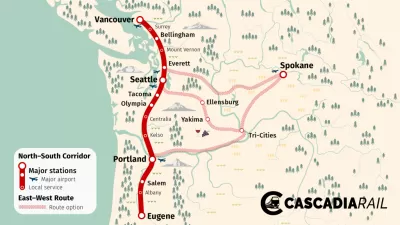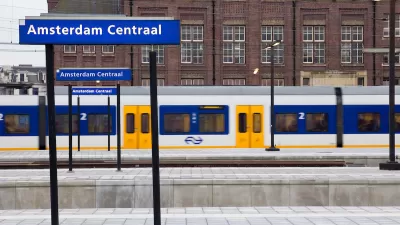Alex Marshall takes a look at Spain's recent record of proactive transportation planning, connecting cities to direct development rather than to connect already successful areas.
"Spain, eyeing the fast trains in France in the early 1990s, opted to build its first high-speed rail line from Madrid to Seville, a beautiful city of Moorish architecture and Flamenco dancers, but not an economic dynamo.
Many thought a better choice would have been to build it between Madrid and the thriving city of Barcelona. Many businessmen already made that journey, and many wanted to do so more quickly and easily.
I rode the new Seville line in 1994, shortly after it opened. I made the 300-mile trip from Madrid to Seville in less than two hours, visiting the Seville World's Fair and returning to Madrid in time for dinner. Even so, I wondered at the wisdom of making Madrid-Seville the first line in the system.
But over the past 17 years, the line to Seville has jump-started the economy not only of that city but of an entire region of the country, beautiful but struggling Andalucia. And once the rest of Spain saw how well high-speed train travel worked, the network was expanded, to Barcelona and other major cities, as well. There are predictions that by 2020, nine-tenths of the country's population will be living within about 30 miles of a high-speed train connection."
FULL STORY: A Bridge to Somewhere

Planetizen Federal Action Tracker
A weekly monitor of how Trump’s orders and actions are impacting planners and planning in America.

Congressman Proposes Bill to Rename DC Metro “Trump Train”
The Make Autorail Great Again Act would withhold federal funding to the system until the Washington Metropolitan Area Transit Authority (WMATA), rebrands as the Washington Metropolitan Authority for Greater Access (WMAGA).

The Simple Legislative Tool Transforming Vacant Downtowns
In California, Michigan and Georgia, an easy win is bringing dollars — and delight — back to city centers.

Albuquerque’s Microtransit: A Planner’s Answer to Food Access Gaps
New microtransit vans in Albuquerque aim to close food access gaps by linking low-income areas to grocery stores, cutting travel times by 30 percent and offering planners a scalable model for equity-focused transit.

This City Will Pay You to Meet Your Neighbors
A North Kansas City grant program offers up to $400 for residents to throw neighborhood block parties.

Commentary: Our Silence Will Not Protect Us
Keeping our heads down and our language inoffensive is not the right response to the times we’re in. Solidarity and courage is.
Urban Design for Planners 1: Software Tools
This six-course series explores essential urban design concepts using open source software and equips planners with the tools they need to participate fully in the urban design process.
Planning for Universal Design
Learn the tools for implementing Universal Design in planning regulations.
Smith Gee Studio
City of Charlotte
City of Camden Redevelopment Agency
City of Astoria
Transportation Research & Education Center (TREC) at Portland State University
US High Speed Rail Association
City of Camden Redevelopment Agency
Municipality of Princeton (NJ)





























